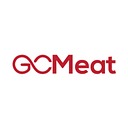The consequences of an untraceable meat supply chain — COVID-19 and more
The coronavirus pandemic has highlighted the fragility and unreliability of the world’s meat supply chain. There are numerous diseases linked to all sorts of domestic meat animals, including beef, lamb, and poultry, and are well-known in the industry and by the general public. These diseases include but are not limited to
- E. coli from ground beef
- BSE (bovine spongiform encephalitis) from beef cattle
- Salmonella from poultry
- Scrapie from lamb and mutton
Meats are known to carry infectious organisms, such as pathogenic protozoans, bacteria, and viruses which may mutate to achieve the capacity to infect another animal host, and the processes involved have been widely investigated; all of these foodborne infections are harmful to humans to a great extent. Along with that, the antibiotics widely used for food-producing animals worldwide are contributing to the rise of superbugs and antibiotic resistance in humans.
“Approximately 75 percent of newly emerging infectious diseases affecting humans started as diseases in animals” — According to the US Centers for Disease Control and Prevention.
COVID-19 is thought to have arisen in a Chinese “wet market” where traders sell both living and dead animals for human consumption. COVID-19 is analogous to the SARS and MERS outbreaks in that it spreads from animals to humans.
How do these viruses and diseases emerge and how do they get to us?
We can’t ignore the connection between meat and diseases like COVID-19 outbreaks. Humans’ insatiable appetite for beef, poultry, and dairy products necessitate the intense imprisonment of large quantities of animals in dirty warehouses. Chickens, ducks, pigs, and other livestock are crowded into narrow pens or feces-strewn sheds. They’re shipped in dirty trailers and slaughtered on the bloody, urine-soaked shooting ground. Pathogens thrive in those environments. New species of toxic bacteria and viruses thrive in overcrowded farms.
Hence, from the field or the fishery to the dining table, there are many stages the meat goes through such as production, processing, distribution, or preparation. These are referred to as the food supply chain. Contamination vulnerabilities exist in the meat supply chain. Especially now, that these supply chains are becoming longer and more complicated with transparency and traceability decreasing by the day.
First and foremost, the term “production” refers to the process of raising the animals that we eat. The majority of food is produced on farms or ranches from domesticated animals. Some foods, such as fish are gathered in the wild. An example of contamination in this stage would be that the yolk of an egg will be poisoned before it is laid if a hen’s reproductive organs are compromised.
Secondly, Slaughter is the first stage in the processing of meat. Meat and poultry will then be ground or sliced into bits. They can also be smoked, fried, or frozen, and mixed with other ingredients to produce sausages or entrées like potpies. An example of contamination here would be that germs can spread to foods that come into contact with germ-infested surfaces used for food processing, such as a packaging line or storage bins.
Moving on in the supply chain, Food distribution refers to the process of getting food from a plant to a customer or a food service establishment such as a supermarket, cafeteria, or hospital kitchen. This move could entail only transporting foods once, such as delivering produce from a farm to a local farmers’ market. Contamination could occur in warm weather, refrigerated food left on a loading dock for an extended period of time can reach temperatures that cause bacteria to develop.
Finally, Preparation refers to the process of making food ready to eat. This move can take place in a restaurant, a home, or an institution’s kitchen. It could include following a complicated recipe with several ingredients, simply heating and serving a dish. Food could be contaminated if a cook uses the same knife or cutting board to cut raw chicken and then slices vegetables for a salad without washing it first, the tomatoes may become polluted with chicken germs.
Despite all of this, Foodborne illness is a preventable public health problem. Preventable, simply with a system of traceability, accountability, and transparency.
The increase in Specialty meat demand across the globe has led to a booming market but current processes and technologies are insufficient thus provide an inadequate picture when tracing the origin of the source.
Stay tuned to see how GoMeat will help mitigate issues similar to this!
